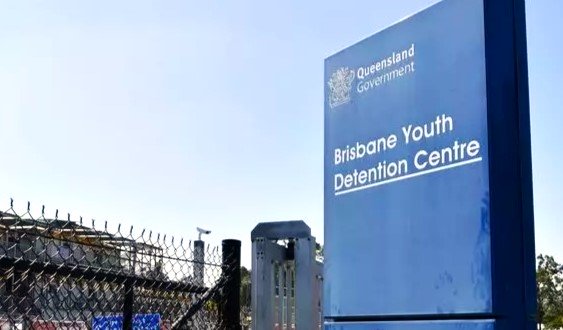The plight of children in custody in Queensland has again been highlighted by a Court of Appeal judgment handed down this week, with judges describing one child’s lengthy isolation as a disgrace and an embarrassment.
The judgment featured a now 17-year-old who was confined to his room for at least 22 hours each day on 52 of the days he was detained.
The isolation was largely due to staff shortages.
“The period of separation was, as the sentencing judge quite aptly stated, ‘a disgrace and an embarrassment to every right-minded member of our community’,” the decision by Justices Philip Morrison, John Bond and Susan Brown said.
There was no benefit to the community or to the young offenders who are given minimal access to rehabilitation to help them change their behaviour before being released, the judges added.
The judgment said separation was not significantly different to solitary confinement when a youth offender spent a large period of time in isolation, with the harmful effects noted in court decisions.
Youth Advocacy Centre chief executive Katherine Hayes goes further, and says the amount of time the teenager spent in isolation was verging on torture according to international standards.
She said long periods in isolation caused significant psychological damage in children, many of whom come from disadvantaged backgrounds, already distrust authorities and are not engaged with education and health institutions.
“Detention in those circumstances doesn’t reduce reoffending. In fact, it’s likely to increase offending because they’re coming out worse off,” Hayes said.
She said rehabilitation required consistent intensive support which in turn needed extensive government investment.
“At the moment all the investment is going to policing, not prevention and early intervention,” Hayes said.
She believed a concerted effort was needed for children identified as serious repeat offenders to fully assess and address their needs so they can be put on a productive path.
“At the moment they’re just forgotten kids, they fall between the cracks,” Hayes said.
Under pressure over a perceived rise in youth crime, the Queensland Government has introduced a raft of controversial laws ahead of the October state election.
Contingencies allowing children to be kept in police watch houses and adult prisons were controversially passed, over-riding the state’s own human rights act.
The Child Death Review report released in March revealed Queensland locked up more children than the rest of the country.
There are fears the youth incarceration rate will skyrocket after the Government’s decision earlier this month to scrap detention as a last resort.
Children already sit in a watch house for days before being transferred to detention where they face long hours in isolation, Cairns-based Youth Empowered Towards Independence (YETI) chief executive Genevieve Sinclair said.
“Some of these kids have been locked down over a month, often nothing to do with their own behaviour … just because it’s understaffed.”

Queensland locks up more children than anywhere else in the country, and is set to almost double the capacity of its youth detention system with the construction of an 80-bed facility in Woodford, north of Brisbane, in 2026 and another in Cairns in 2027.
As a result, they come out of detention angrier and angrier.
In Townsville’s Cleveland Youth Detention Centre, insufficient staff meant children could not be moved to classrooms for education programs, Sinclair said.
Additional staff had helped the situation, but Sinclair said absenteeism and attrition was high.
Children may have access to self-directed learning material when isolated but Sinclair questioned the efficacy of such paperwork slipped under the door for a young person with intellectual disabilities and low literacy levels.
While the Government spruiked funding for vulnerable young people and those in detention, Sinclair said: “The reality is, it’s not being delivered if you’ve got no workforce.”
The Voice for Victims advocacy group has marched on parliament calling for an even tougher stance on youth crime.
But youth workers find calls to lock up juvenile offenders frustrating because it needs to come with rehabilitation, the opportunity to understand what they have done and its impact on others, and the development of emotional skills.
“Otherwise you’re just sending children out that are angrier and more traumatised than before they went in, and they then come out and inflict more harm on the community,” Sinclair said.
“If we lock children up without any rehabilitation we actually just drive crime … and that’s what’s happened and there are no plans to stop it.”
Queensland is set to almost double the capacity of its youth detention system with the construction of an 80-bed facility in Woodford, north of Brisbane, by 2026 and another to be operational in Cairns a year later.
Youth workers who want to engage in rehabilitation feel despair, saying building more detention centres won’t help.
Sinclair regards the number of Indigenous kids behind bars in poor conditions as an international shame, claiming there would be outrage if it was happening elsewhere.
“There are no other countries locking up Indigenous kids like we are in Queensland in the sorts of conditions we are,” she said.
A teenager isolated 24 hours a day for 10 days at the Cleveland detention centre suffered significant harm because of the circumstances in which he had been detained, District Court Judge Tracy Fantin said in another judgment.
“It is unsurprising that if you lock up a child for such lengthy periods of time with no stimulation other than access to a television, [they are] likely to respond by behaving poorly.
“As other judicial officers in other jurisdictions in this country have observed, if you treat a child like an animal, it is unsurprising that they may behave like an animal.”
Lifeline 13 11 14
Kids Helpline 1800 55 1800 (for people aged 5 to 25)
AAP














